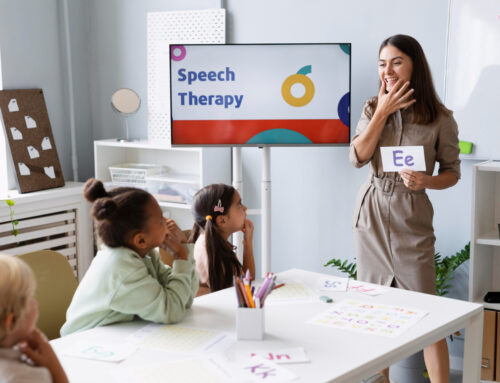
The time has come for your little one, who has surpassed the baby phase, to transition from milk/formula to actual foods. The steps can be meticulous and slow, as it should be for a child who is experimenting with foods for the very first time. After the parents spend months on introducing the purees and dissolvables, comforting the child when teeth start cutting through the gums, toying with a variety of spoons and sippy cups, and discovering the child’s allergies and preferences, the light at the end of the tunnel appears and parents can pat themselves on the back for a job well done. Their young toddler is now feeding themselves!
If only it were so easy for all parents of young children. Some kiddos are not given the luxury of such smooth transitions through the self-feeding process. Conditions or disorders create unexpected obstacles, which include: sensory processing difficulties, dysphagia, nervous system deficits (i.e., cerebral palsy), muscle weakness, respiratory complications, and cognitive/behavioral difficulties to name a few. As a result, the child does not develop a typical feeding pattern which can result in malnutrition and dehydration.
That’s where occupational therapy (OT) comes in, as well as clinical input from speech and language pathology (SLP). Take a look at the following scenario which provides context from a home health stand point:
Clarissa is the mother of 3 children, 2 of which attend elementary school during the day. Her youngest, Emma, is 2 years old and has Down’s syndrome. Clarissa pursued therapy services soon after Emma was born, thus she has been seeing early intervention therapists in her home. Due to Emma’s overall, low muscle tone, she has trouble manipulating and chewing solid foods in her mouth. OTs and SLPs from the early intervention program have been tag-teaming it, OT addressing oral muscle strengthening for self-feeding while SLP has been mainly focusing on Emma’s language development. Clarissa would like to see Emma attend preschool in a couple of years, so her goal is to have Emma catch up on eating and talking well enough so that she is comfortable around her classmates.
Let’s extract OT’s role and describe what this particular therapy can offer for self-feeding tasks with children. The following list is not all-inclusive, but it does provide some of the common issues that OT is equipped to remedy:
- Therapeutic exercise: If it is a matter of muscle, tongue, or joint control, OT can offer exercises for the child to complete in order to improve movement required to chew, manipulate, sip, and swallow food. Of course, no child is going to voluntarily sit for several minutes of the day completing a rote exercise schedule. OT would introduce activities in the form of play so that the child will have joy and motivation while not realizing what exercise benefits they are automatically receiving (i.e., chewy candies, bubble-blowing, making faces, etc.).
- Sensory Challenges: Some children are beyond “picky” to the point where their food aversions make every mealtime a dramatic feat. OTs can evaluate children for specific sensory processing deficits and then set up the child on a detailed feeding schedule combined with relevant interventions. The process is slow and complex, but it can be easily carried out by parents/guardians at home if the OT provides proper training and resources. OTs who are well-versed or even certified to address sensory processing disorders are the most suitable to consult with regarding this area of self-feeding deficits.
- Behavioral difficulties: Childhood diagnoses or conditions often come with misunderstood cognitive or behavioral elements. Examples include atypical aggressive behavior, meltdowns, reduced attention span, and language impairments, all of which have a devastating impact on meal time participation. OTs can offer interventions or programs that reduce maladaptive behaviors in order to allow for productive feeding. Examples include developing consistent feeding schedules, locating and implementing effective environmental cues, introducing coping techniques, eliminating distractions, etc.
- Parent/caregiver education: Any type of home health therapy is going to heavily emphasize the need for parent/caregiver/guardian education. Although the therapists provide the intervention, it is the at-home parents who will be responsible for carrying it out when therapy is not around. This includes therapy providing sufficient and comprehendible resources for the parents, parents implementing schedules, routines, or habits consistently at home with the child, and parents educating other caregivers who may interact with the child (i.e., babysitters, respite care providers, teachers, other family members, daycare workers, etc.).





